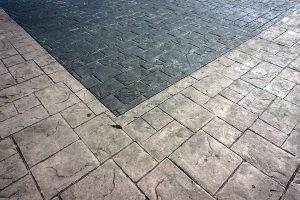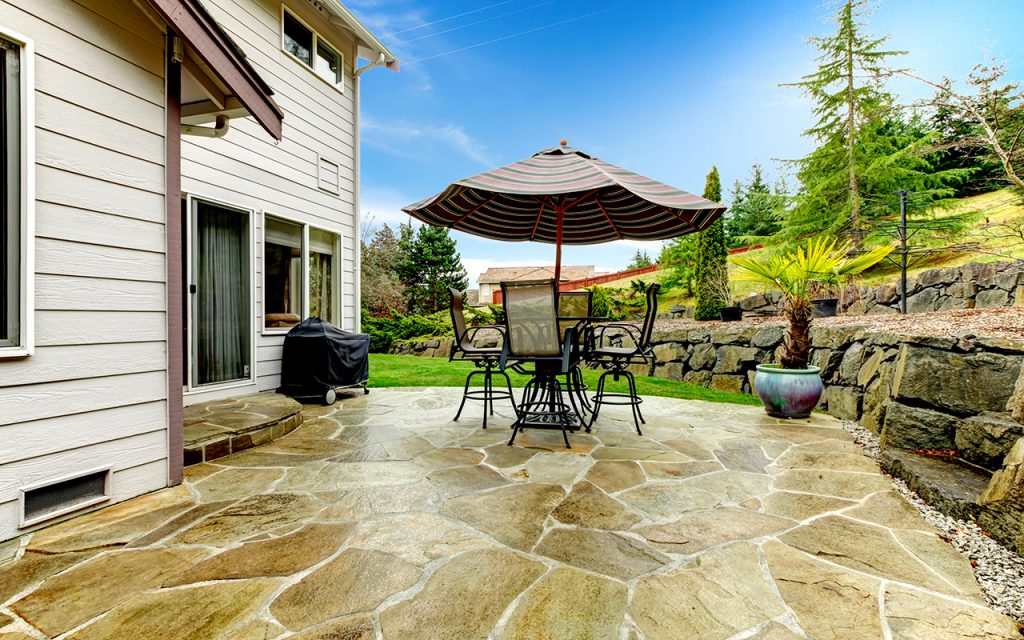Concrete overlay is a thin layer of a colored cement-based product that is installed over existing concrete for the purpose of repair or decor. Concrete overlays can be applied feather-thin or up to ¾”, depending on the type of finish you’re going for. This is becoming a popular outdoor and indoor choice for flooring and other surfaces when a new look, greater durability, and more versatility is desired without having to experience the removal of one flooring in order to install a new surface. This unique type of floor covering is conveniently laid over most existing surfaces such as concrete, wood, plaster, or cement board, which makes concrete overlays a durable and effective way to restore flooring and walkways, preserve finishes, and even level uneven floors.

How Durable is a Concrete Overlay?
A concrete overlay should be a lifelong investment as long as it’s been installed properly and well-protected by a sealer or coating. It should be able to withstand heavy foot traffic as well as vehicle traffic and should not need to be replaced.
If you’re applying your concrete overlay on floors, floor wax or polish can give you an added layer of protection. If the floor starts to show wear, reapply a sealer or wax to protect it.
You may also choose to polish your overlay to give it a high-gloss look. When it comes to concrete overlays, there are so many different options that you can truly get the customized look you want.
Types of Concrete Overlays
There are four basic different types of decorative concrete overlays. Although there is a wide variety of finishes, most overlays themselves are made from a blend of polymer resins. Cement, sand, and other materials are combined to make the overlay. The overlay is also made to adhere to the existing concrete while still maintaining its beauty.
As you’re doing your homework about overlays, you’ll also discover that there are many polymer-modified made overlays as well. These usually stand-up pretty well when it comes to wear and tear, salt, chemicals, and temperature changes. They also come in a variety of textures and colors.
Besides the materials of your overlays, you’ll need to decide the finish and look you’re going for. There are four main types to choose from:
Stamped Overlays
These look like stamped concrete and are the most commonly used. They can give your concrete brick, stone, wood look. Since they are cement-based they are durable when it comes to stains.
When you’re looking at stamped overlays you’ll see that they come in texturing skins that are thinner and overlay mats that are deeper and give the floor a more textured look. Both types come in a variety of colors to choose from.

Self-Leveling Overlays
These are used to restore worn or damaged concrete. They are often used underneath other floor products and flatten out on their own.
Multipurpose Overlays
Since these are mainly made from sand, they are versatile to suit your needs. They can be textured and designed using a trowel or hopper gun.
Microtoppings
If you have concrete that’s old and worn, you may want to consider microtoppings. They are applied thinly and usually come in gray or white. They can give your floors a marbleized look if that is what you’re trying to achieve.
How Long Does it Take to Install a Concrete Overlay?
Installation time will vary depending on the project and the type of material that is being used for the overlay. Generally, overlay projects can be completed in a short period of time and the floor can be accessed within a few hours of the project being completed. It’s best to speak with your installer so that you can get an accurate window of when your work will be complete.
The Advantages of Concrete Overlays
Installing a concrete overlay to a walkway or patio can fix underlying problems or uneven textures. They correct any surface deficiencies while providing skid resistance and improving surface draining. If you live in a climate with extreme heat or cold, a concrete overlay can minimize weather-related deterioration and improve the overall structural integrity of your space. From a design standpoint, a concrete overlay can help you achieve any look you’d like, from earth tones to geometric patterns.